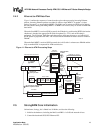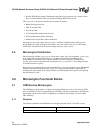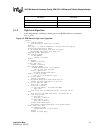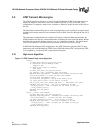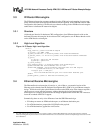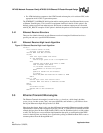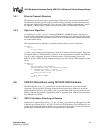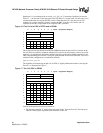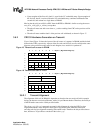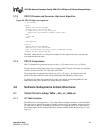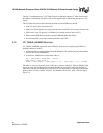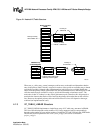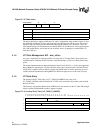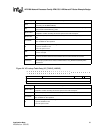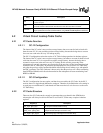
IXP1200 Network Processor Family ATM OC-3/12/Ethernet IP Router Example Design
Application Note 27
Modified on: 3/20/02,
• Upon reception of the first cell, data11 is saved in the VC cache/table entry. Upon reception of
the 2nd cell, data11 is retrieved from the VC cache/table entry, combined with data0 of the
second cell, and written in a single burst to DRAM.
Moving the nth cell (not cell0) in a PDU from the RFIFO to DRAM is similar to using the macro
atm_move_cell0_rfifo_to_sdram(), except that:
• The nth cell must start with a run-time crc_residue resulting from CRC on the previous cell in
the PDU.
• The nth cell must combine data11 of the previous cell with data0, as shown in Figure 17.
3.6.2 CRC-32 Hardware Generation on Transmit
Figure 18 and Figure 19 show the layout of the cell source as it appears in DRAM, and the desired
format in the TIFO, respectively. Aspects of the first, nth, and last cell are all overlaid on the same
diagram, as the positions are the same. In each diagram, rows are 64-bit “quadwords”.
3.6.2.1 Transmit Alignment
The alignment of this cell in DRAM is dependent on how the data was received. In this example
design, the data was received on Ethernet, with a 14 byte Ethernet header. Therefore, the first byte
of the IP header starts on the 15th byte of the buffer.
The sdram_crc[t_fifo_wr] commands account for this alignment by using the IXP12xx byte
alignment hardware. These diagrams show bytes in big-endian order, while the instruction
encoding asks for byte alignment assuming little endian order. Therefore the 6-byte offset shown
here, becomes a 2-byte offset as encoded in the indirect_ref.
Figure 18. Transmit cell as seen in DRAM
0 1 2 3 4 5 6 7 Bytes -> (Big Endian Diagram)
0------LLC
1LLC IP
2IP
3IP
4IP
5 AAL5
6 AAL5 CRC32* CellN+1
Figure 19. Transmit cell seen in TFIFO
0 1 2 3 4 5 6 7 Bytes -> (Big Endian Diagram)
0 ATM Header LLC
1LLC1 IP
2IP
3IP
4
5AAL5
6 CRC32 - - - -



